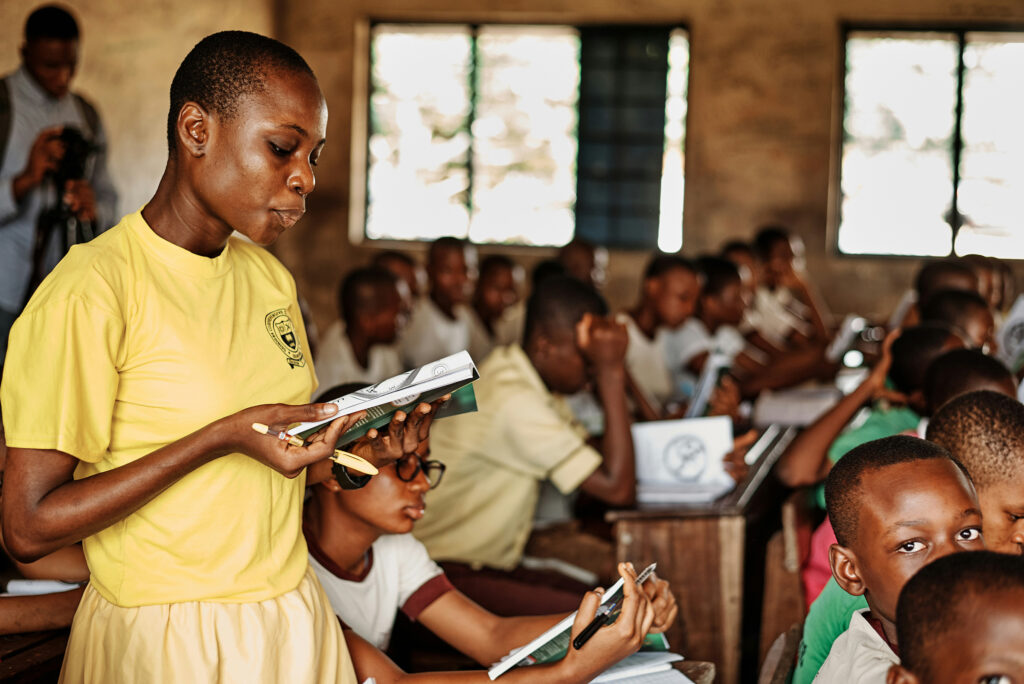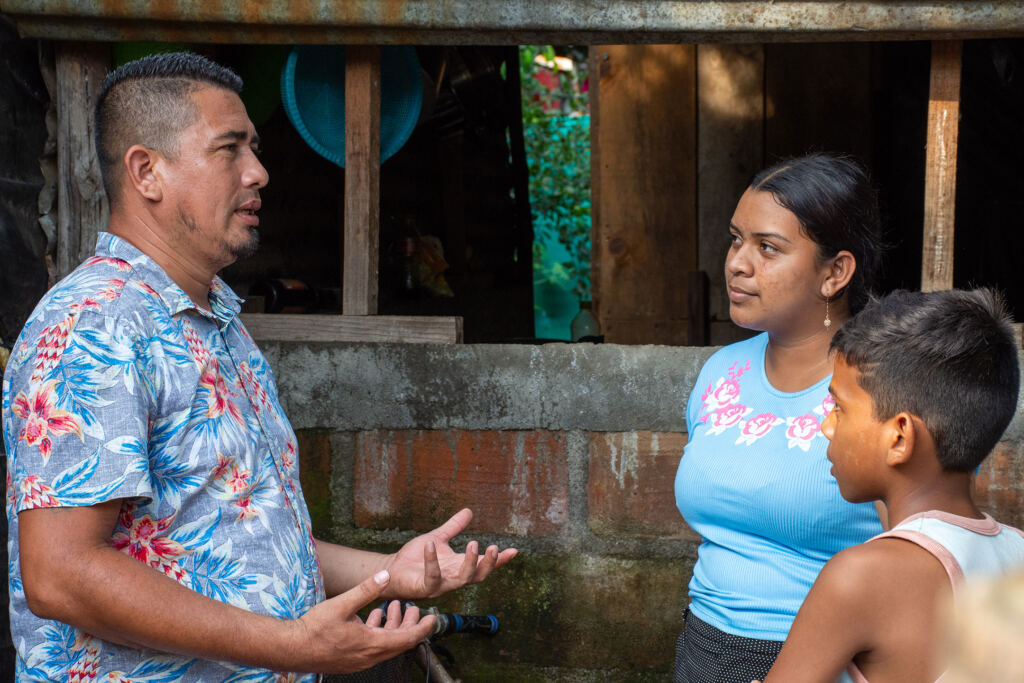When I reach for my Bible, I ask myself which one.
I have several Bibles, in several versions, basic texts and study Bible editions. And I am not the only one so blessed. The majority of American households own a Bible, and on average, they have at least three.[1]
It may come as a shock that an estimated 1.4 billion people don’t have the complete Bible in their own language.[2]
Why don’t all the languages of the world have one? I’d like to consider five reasons why thousands of language groups still don’t have a Bible.
1. The Staggering Number of Languages
How many languages need a Bible? We must first ask how many languages are spoken around the world.
In the 1950s, William Cameron Townsend, the founder of Wycliffe Bible Translators and SIL International, attempted to answer that question. After several years of research, he and his team concluded that there were 2,000 languages that needed a Bible.[3] Townsend was so confident of the number that he entitled a book, Two Thousand Languages To Go.[4]
Over the past several decades, though, research has continued, and the number of languages has grown. The number of languages around the world now stands at 7,388, including sign languages.[5]
There is a staggering number of languages, but that is not the main reason why so many have no Bible. In fact, if it were not for the next factor, the Bible would probably be translated into every language spoken today!
2. The Inaccessibility of Many Languages
Not only is there an incredible number of languages, but many of these languages are in inaccessible regions.
In 1845, Alfred Saker and his family arrived on the shores of modern-day Cameroon.[6] Saker set about proclaiming the gospel among the local Duala people. By 1848, Saker and his co-workers published the Gospel of Matthew in Duala on a small printing press.[7] The New Testament was published in 1862, and the complete Bible was finished 10 years later.[8] In 1872, at the age of 62, Saker returned to England due to fatigue and never saw Cameroon again.
Mission work and Bible translation made progress along the coast of Africa, but malaria, political instability, and the difficulties of travel made many regions and languages inaccessible. It was not until after the First World War that missionaries arrived in other regions of Cameroon.
And other language groups have been inaccessible for political reasons. The Uzbeks of central Asia were part of the Soviet Union. The first translation work there began in the 1970s, but it was done by Uzbeks living in Germany and Israel.[9] After the collapse of the Soviet Union and emergence of an independent Uzbekistan in 1991, the Bible Society of Uzbekistan was created.
The complete Bible in Uzbek was published in 2016, and after many years of work, the Word is finally available to the 30 million speakers of this language.[10]
It is amazing to see how the gospel is penetrating regions of the world previously inaccessible, and we pray that the last remaining boundaries will fall. Yet there are other factors that have impeded the translation of God’s Word.
3. The Elevation of One Language Over Others
In the second chapter of Acts, the apostles proclaimed the gospel on Pentecost, and by the end of that day, over 3,000 were baptized. In the following decades, the gospel spread from Jerusalem west to Rome and Carthage, a city in present-day Tunisia.
In these predominantly Latin-speaking cities, the believers apparently gradually shifted from Greek to Latin, even translating the Scriptures into Latin within three generations of the gospel arriving in this area.[11]
The Latin-speaking Christians of the Western church evangelized other regions, continuing to preach and teach from their Latin Bible. For instance, Patrick of Ireland preached across Ireland, but he and his followers apparently never translated the Scriptures into Irish. The Scriptures in Irish would not appear until 1602.[12]
In the generations that followed, missionaries from Ireland traveled to Scotland and northern England. They established a monastery at Lindisfarne. One of the most prized possessions at the monastery at Lindisfarne was a Latin Bible. In approximately 720 AD, a monk by the name of Eadfrith carefully added English words below each line of the Latin, presumably to assist in the reading of the Bible in English.[13]
This Latin Bible with English translation, known as the Lindisfarne Gospels, is significant because it shows the high place of Latin and, at the same time, the desire of the monks to be able to read in English and make the Scriptures accessible to those who didn’t know Latin.
In the centuries that followed, the church in the West held the Latin Bible in such high esteem that it eventually banned the translation of the Bible into English and other European languages. During the Reformation, the Roman Catholic Church put extreme limitations on the use of the Bible in any other language than Latin.
Time and again, those with the Bible in their own language still view their translation and language as more valuable than other languages. Even if those with a Bible may not value another language, couldn’t the believers without a Bible just translate for themselves?
Let’s consider the next factor that impedes translation work.
4. The Technical Requirements of Translation
Another reason many languages lack a Bible is that the work of Bible translation requires a unique group of individuals with uncommon skills.
For translation to begin, at least one person must know two languages—the language in need of a Bible translation as well as a language with the Bible. In the best of situations, there is a translator who also knows the biblical languages of Greek, Hebrew, and Aramaic.
The first Bible published in America was not in English. It was the Bible in the Massachusetts language, a member of the Algonquian family of languages.[14] It was the culmination of many years of work by John Eliot and his Massachusetts co-translator.[15]
John Eliot came to New England in 1631. He was a graduate of the University of Cambridge in England, trained for pastoral ministry and skilled in biblical languages. After ministering in Boston for a year, he moved to Roxbury. He pastored the church for the colonists in that community; however, he had a burden for the neighboring Massachusetts villages.
Eliot began visiting the neighboring villages but could make no progress with only English. He found a man willing to teach him their language, and they started the process that led to the proclamation of the gospel and eventually to the translation of the Massachusetts Bible.
Today, most translators work as a team. It is important to have someone with some training in translation and linguistics. Another member usually has exegetical skills, being able to refer to the biblical languages and commentaries. It’s also essential to have members who have an in-depth knowledge of the local language and culture, possibly even serving as pastors or lay leaders in local churches.
Despite the importance of these first four factors, one last factor remains that is the most crucial of all.
5. No Vision for Translation
Despite the challenges noted thus far, the most significant reason for thousands of languages without Scripture is a lack of a vision for the advance of the gospel to the ends of the earth and Bible translation as part of establishing churches.
In around 340 AD, a young Christian by the name of Wulfila was consecrated as bishop and given the responsibility of establishing the church among the Goths, in present-day Bulgaria.[16] He believed that to establish this Germanic ethnicity in the faith, they must have the Scriptures, so he assembled a team and translated the Bible into their language.
Wulfila may be the first Christian translator that we know by name who understood the importance of having the Bible in the language of the local church so that the believers could be properly grounded in their faith. Unfortunately, very few church leaders shared his vision and commitment to translation over the next several centuries of the church.
In 1793, William Carey and his family left England to serve as missionaries in India. He learned the Bengali language and within a few years, had a draft of the New Testament prepared. He eventually established a printing press and, with his missionary colleagues, produced Scripture translations in more than 40 languages.[17]
In the two centuries since William Carey, mission work has expanded at an incredible pace, and Bible translation has been a key part of strengthening churches in previously unreached ethnic groups.
However, too often, those with a Bible in their own language lose sight of the importance of proclaiming the gospel to other language groups and ensuring that they have the Scriptures in their own languages as well.
In every generation, in every believer’s heart, it is essential to recognize and advance the proclamation of the gospel to those ethnic groups who have yet to hear.
Furthermore, as Wulfila and his Gothic colleagues understood, the proclamation of the gospel must be accompanied by a translation of the Bible so that the church can read, teach, and preach the Scriptures and thereby strengthen the believers while calling the whole language community to repentance.
A Glimpse of Worship Around the Throne
It could be discouraging to think about these five factors that have worked together to impede the translation of the Bible. However, the point is not to discourage but to learn about the realities facing many around the world.
There is indeed an incredible need, a multitude without Christ and the Word. Yet there is another multitude.
In the fifth chapter of Revelation, Jesus appears before the throne as the Lamb that was slain. No longer a lowly servant, He stands before God the Father as the resurrected and triumphant Lamb. He is praised for giving His life to ransom a people for God from every tribe, language, people, and nation (Revelation 5:9).
In John’s vision, Jesus Christ is triumphant and worthy of all honor and praise today and for all eternity, and He will receive that praise from the multitudes that He has redeemed from the ends of the earth.
My prayer is that we would see more and more of those without the Word join the multitude praising Christ for eternity—that the Lamb may receive the full reward for His obedience to the Father!
And with that victorious scene in mind, may the Lord encourage us to pray for those without the Scriptures. Let us pray that God would receive glory as His life-giving Word goes forth to the nations!
Pray as well that those who have His Word would seek to make it available in the languages which still lack Scripture. Pray for the Lord’s leading as to how best you could be part of Bible translation, possibly even becoming a translator yourself!
Editor’s Note: This article was originally published by the Journal of Biblical Missiology on September 4, 2023. Used with permission.
[1] American Bible Society, State of the Bible 2017 (Philadelphia: American Bible Society, 2017), 27.
[2] https://www.wycliffe.net/resources/statistics/.
[3] Ethel Wallis, Two thousand tongues to go; the story of the Wycliffe Bible Translators (New York: Harper & Brothers, 1959), 297.
[4] Ibid, ix.
[5] https://www.wycliffe.net/resources/statistics/.
[6] Edward Underhill, Alfred Saker, missionary to Africa: a biography (London: The Baptist Missionary Society, 1884), 27.
[7] Ibid, 49.
[8] Ibid, 104,131.
[9] Borislav Arapovic, “Uzbek”, in A Guide to Bible Translation: People, Languages, and Topics, ed. Philip A. Noss and Charles S. Houser (Maitland, FL: Xulon Press, 2019), 266-67.
[10] Ibid, 266.
[11] Carlo Buzzetti, “Latin”, in A Guide to Bible Translation: People, Languages, and Topics, ed. Philip A. Noss and Charles S. Houser (Maitland, FL: Xulon Press, 2019), 183.
[12] Paul Ellingworth, “Irish”, in A Guide to Bible Translation: People, Languages, and Topics, ed. Philip A. Noss and Charles S. Houser (Maitland, FL: Xulon Press, 2019), 160.
[13] Robert Hodgson, “Lindisfarne Gospels”, in A Guide to Bible Translation: People, Languages, and Topics, ed. Philip A. Noss and Charles S. Houser (Maitland, FL: Xulon Press, 2019), 561.
[14] Ruth Heeg, “Algonquian”, in A Guide to Bible Translation: People, Languages, and Topics, ed. Philip A. Noss and Charles S. Houser (Maitland, FL: Xulon Press, 2019), 74.
[15] Paul Ellingworth, “Eliot, John”, in A Guide to Bible Translation: People, Languages, and Topics, ed. Philip A. Noss and Charles S. Houser (Maitland, FL: Xulon Press, 2019), 24.
[16] Philip Noss, “Wulfila”, in A Guide to Bible Translation: People, Languages, and Topics, ed. Philip A. Noss and Charles S. Houser (Maitland, FL: Xulon Press, 2019), 63.
[17] Philip Noss, “Carey, William”, in A Guide to Bible Translation: People, Languages, and Topics, ed. Philip A. Noss and Charles S. Houser (Maitland, FL: Xulon Press, 2019), 15.




